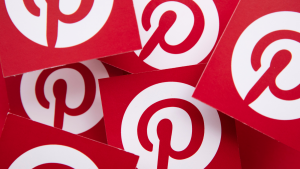The National recently reported a declining number of listed companies on the U.S., U.K. and European stock markets.
Despite record high share prices, the supply of stocks is dwindling due to bankruptcies, private ownership and fewer new listings. The U.S has about 5,000 fewer listed companies than expected for an economy of its size. At the same time, the U.K. has lost 25% of its companies in the last decade. This spells doom for these social media stocks to avoid. Capital seems to be flowing out of the traditional stock market and into other ventures. Those include private equity, which could accelerate in the event of a stock market crash.
With a small number of social media stocks left over, only the strongest will survive. After all, they compete for a limited pool of dollars from investors. One should then consider abandoning their speculative bets and stick to the blue-chip options.
So let’s delve into three social media stocks to avoid now.
Snap (SNAP)

Snap (NYSE:SNAP) owns Snapchat, a messaging app known for its disappearing messages and augmented reality (AR) filters. The company has struggled to achieve sustainable profitability. It faces tough competition from Meta’s (NASDAQ:META) Instagram and TikTok.
The brand’s competitive issues have made it challenging for Snap to secure a larger share of the digital advertising market. And while Snap has grown its user base and revenues, it has yet to build a sustainable business model.
SNAP is still a relatively small fish in the market compared with Meta or its key rivals. Its market cap is just $24 billion. Furthermore, analysts project that its revenue year-over-year (YOY) increases will slow down after fiscal year 2025.
Therefore, SNAP will either be in the crosshairs of big tech as an acquisition target or a rival to trample. We can see how Meta has absorbed Whatsapp and Instagram into its fold beforehand. In reality, SNAP may not have the resources to compete in the long-run.
Pinterest (PINS)

Pinterest (NYSE:PINS) is largely a relic from the mid 2000s. Yet, it has managed to stay relevant even in today’s world. I also see PINS as a potential acquisition target.
Recently, Pinterest reported strong first quarter 2024 results, with a 23% revenue growth reaching $740 million. Additionally, it showed a record 518 million global monthly active users (MAUs), up 12% YOY. Despite a GAAP net loss of $25 million, adjusted EBITDA for the quarter was $113 million.
Pinterest’s Q2 of 2024 guidance forecasts revenue in the range of $835 million to $850 million, representing an 18-20% YOY growth.
However, there are some issues that I don’t think PINS can overcome easily. First, it trades at an absurdly high P/E at 152 times sales. This is due to the brand just recently breaking even. Its forward measures are lower, but this is assuming that it will continue its record earnings streak. And I feel it is too risky to rely on this.
More time needs to be given to PINS to prove itself as a stable earner. Otherwise, it’s one of those social media stocks to avoid.
Match Group (MTCH)

Match Group (NASDAQ:MTCH) owns several popular online dating platforms, including Tinder, Match.com and Hinge. While online dating continues to grow in popularity, Match Group faces challenges such as increasing competition from free dating apps, changing consumer preferences.
Recently, CNN reported that the dominance of Tinder in the dating app market is declining, with annual downloads decreasing and paying users falling by 8% last year.
However, dating apps like Bumble, Grindr, Hinge and OkCupid remain popular, with downloads more than doubling since 2012. Bumble’s downloads are on track to surpass Tinder’s.
And, while young adults under 30 are the primary users of dating apps, they are also forming romantic relationships offline more frequently than older generations.
As social media users and communities have grown, they have also become more niched-down and decentralized from each other. Alt-tech sites like Gab and extremely niche communities such as Ravelry, which caters to knitters, underscore this.
Therefore, I don’t believe that MTCH has a durable competitive advantage to justify an ongoing raise in its valuation, especially as many consider the “peak” of online dating being far from over.
On the date of publication, Matthew Farley did not have (either directly or indirectly) any positions in the securities mentioned in this article. The opinions expressed are those of the writer, subject to the InvestorPlace.com Publishing Guidelines.
